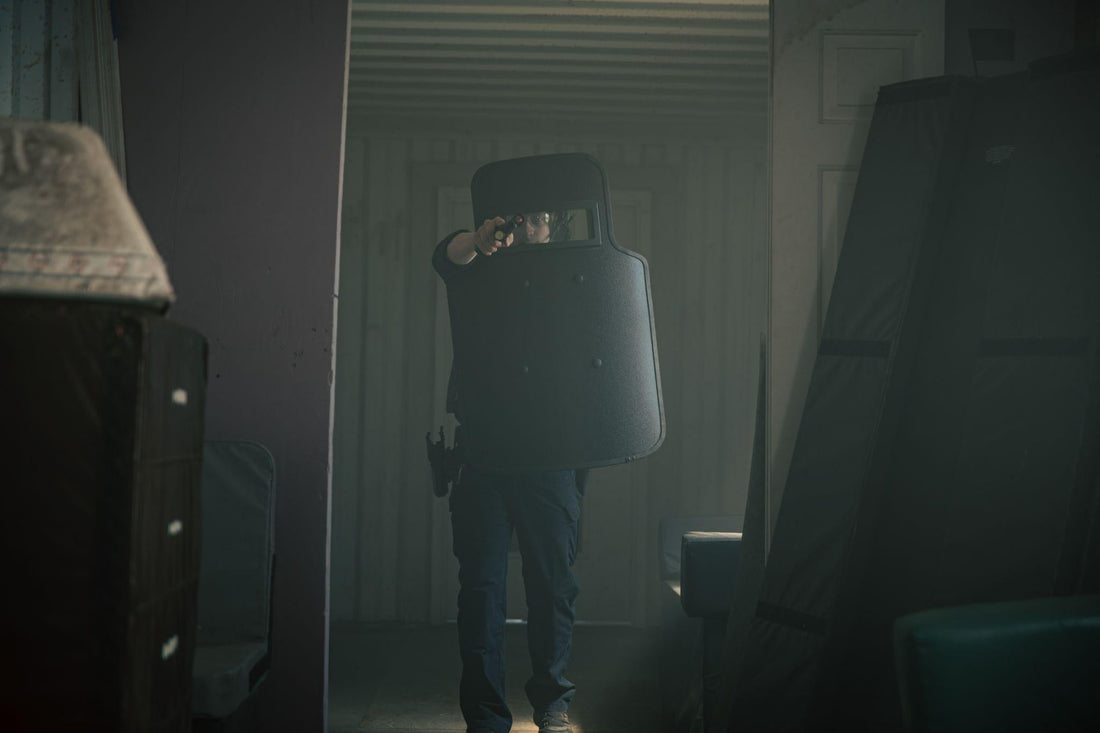There are several personal factors to weigh when purchasing body armor. The type of threats you expect to face, the protection level required, and the amount of weight and mobility you are willing to trade all matter.
NIJ Standard 0101.06 defines the different levels of body armor most common in use today. These levels range from IIA to IV, with each step designed to handle stronger ballistic threats. Higher protection often comes with added weight and cost, though modern materials such as polyethylene (PE) and ceramics can reduce the burden.
Level IIA or II Bulletproof Vests
Level IIA armor is tested to stop 9 mm and .40 S&W handgun rounds fired from short-barrel pistols. Once common for patrol officers, it has largely been phased out due to the rise of higher-energy handgun threats. Lightweight and thin, IIA offers the least margin of protection.
Level II is tested against 9 mm and .357 Magnum from short-barrel handguns. It offers stronger coverage than IIA while staying relatively light and concealable. Many agencies once favored Level II for its balance of comfort and protection, though most now issue Level IIIA.
Both levels remain available but are less common today because the small difference in weight compared to IIIA often doesn’t justify the reduced protection.
Level IIIA Bulletproof Vests
Level IIIA is the highest handgun-only protection level under NIJ 0101.06. It is tested to stop .357 SIG and .44 Magnum fired from longer-barrel pistols. This level has become the standard for many patrol officers.
Level IIIA vests are widely used because:
- Versatility: They defend against nearly all common handgun threats.
- Comfort: Softer than rifle plates, they flex with the body and can be worn under or over uniforms.
- Concealability: Many IIIA carriers are slim enough to wear under clothing.
Some manufacturers market IIIA armor as resistant to shotgun loads, but shotguns are not part of NIJ testing. While some panels may stop buckshot or slugs, this performance is not guaranteed under NIJ Standard 0101.06.

Level III Rifle Plates
The first rifle-rated category is Level III hard armor. Under NIJ 0101.06, Level III must stop six hits of 7.62×51 mm NATO M80 ball (FMJ lead core), which is similar to .308 Winchester loads.
In practice, Level III plates can stop many lead-core 5.56 and 7.62 rounds, but not all. Steel-penetrator rounds such as 5.56 M855 “green tip” may require Level IV protection.
Plates may be made from steel, UHMWPE (polyethylene), or ceramic composites. UHMWPE is lighter but may struggle against high-velocity 5.56. Steel is tough but heavy and prone to spall. Ceramics balance protection with weight but are more fragile to drops.
Level III+ / Special Threat Plates
The term Level III+ is not an official NIJ rating. Instead, it is widely used within the industry to describe plates that fill the gap between Level III and Level IV.
These plates are often tested against additional rifle threats—such as 5.56 M855 “green tip” or high-velocity 5.56 M193—that standard Level III plates may not stop. Construction usually combines a ceramic strike face with a PE backer, giving them greater versatility than pure PE Level III plates.
When choosing plates, always check independent test reports rather than relying solely on the “III+” label.
Level IV Hard Armor Plates
Level IV is the highest rating under NIJ 0101.06. It must defeat a single hit of .30-06 M2 AP (steel core armor-piercing).
Ceramic or ceramic-hybrid designs are most common at this level. The ceramic strike face is designed to shatter on impact, breaking down penetrators while the backing absorbs energy.
Weight varies widely by design. Lightweight Level IV plates may weigh around 6–7 pounds each, while steel alternatives can exceed 10 pounds per plate. Level IV provides unmatched rifle protection, but at the cost of bulk, expense, and reduced mobility compared to lower levels.

NIJ 0101.07: The Next Generation
The NIJ has introduced NIJ Standard 0101.07, which reorganizes protection levels into new categories:
Handgun Armor
- HG1: Lower-energy handgun rounds
- HG2: Higher-energy handgun rounds
Rifle Armor
- RF1: Comparable to current Level III (M80 ball)
- RF2: Expands coverage to include 5.56 M855 “green tip” and M193 threats
- RF3: Equivalent to current Level IV (.30-06 AP)
NIJ 0101.07 also works alongside NIJ Standard 0123.00, which lists detailed test threats and velocities. This update creates a clearer, threat-based system. However, most products on the market today are still certified under NIJ 0101.06 while the transition is ongoing.
Protection Without Compromise
Your armor choice should reflect your mission, your environment, and the threats you expect to face. NIJ 0101.06 remains the current benchmark for most armor in circulation, while NIJ 0101.07 offers a more threat-focused path forward.
Always confirm the specific NIJ certification of any armor you purchase, and review the test data for “special threat” claims. The right plate or vest gives you the confidence to act fearlessly—knowing you carry protection built to stop the worst.
RTS Tactical offers a full range of NIJ-certified body armor and ballistic shields. Explore our lineup to find the protection that matches your mission.
References:
National Institute of Justice.Understanding NIJ 0101.06 Armor Protection Levels.
National Institute of Justice. Ballistic Resistance of Body Armor, NIJ Standard 0101.07.

